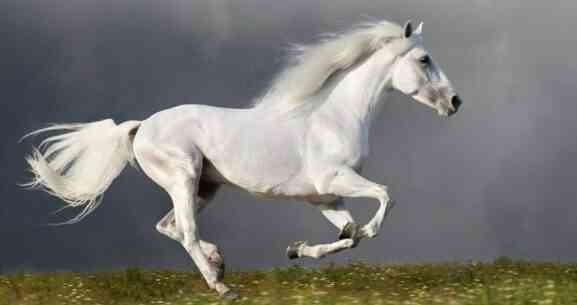It is difficult to overestimate the importance of horses for humanity. For centuries, these animals have served people faithfully, and even today in some parts of the Earth they are still extremely important for survival. Of course, with the development of technology, the role of horses in the economy has decreased, but in some countries these animals are still widely used on the farm.
Facts about horses
- In a culture of more than two dozens of peoples, the horse is considered a sacred animal.
- The country with the most horses — China (interesting facts about China).
- Horses were domesticated about 6000 years ago.
- African Masai tribe believe that a person killed by a horse will definitely go to heaven.
- Europeans brought horses to North America. Famous Mustangs — feral descendants of these horses.
- Horses dream in color.
- Many horses like coffee.
- This is one of the few animals that can recognize itself in a photograph.
- The ancestors of modern horses appeared on our planet about 60 million years ago. They were modest in size — 30-35 cm tall and about 5 kg in weight.
- The only breed of these animals that has never been tamed — Asian wild.
- Horse eyes can move independently of each other (interesting facts about the eyes).
- Horses living with people can distinguish different emotions that sound in the human voice.
- Many horses love music, but not any — relaxing melodies are to their liking, but hard rock usually annoys them.
- Horse hooves act as a pump, helping to circulate blood — when a horse steps on a hoof, the blood is forced out of it up into the leg.
- These animals really know how to sleep standing up.
- In total, there are about 160 breeds of horses in the world.
- The officially registered maximum weight of a horse is 1520 kg. It was a stallion named Samson, and he was just huge and muscular, but not fat.
- In Hinduism, a white horse is considered one of the incarnations of the god Vishnu.
- Cases have been recorded more than once when horses, skilled at opening their stable doors, used that knowledge to unleash their locked-in brethren.
- In packs of wild horses, both a male and a female can be the leader.
- Particularly large horses were bred in the Middle Ages in Europe, as the troops needed powerful horses capable of carrying heavily armed knights (interesting facts about the Middle Ages).
- Their bones are stronger than those of most other living creatures on Earth, but in the event of a fracture, they grow together very slowly.
- The smallest horses in the world — falabella, they are about the knee-length of an adult.
- The age of horses is easily determined by an experienced specialist by the condition of their teeth.
- Unlike most other herd animals, horses do not necessarily have a leader male.
- The wool of New Zealand horses is almost impossible to get wet — it repels water that falls on it.
- There is chronicle evidence confirming the fact that the mighty horses of the crusaders clad in armor not only carried armored knights, but also broke through the adobe walls of Saracen fortresses at a gallop.
